Candace Rose Rardon is an illustrator and travel blogger. I wanted to talk to her for Grand Adventures about earning a living from what you love, and forcing yourself to slow down on your travels, really focus, and do something creative.

Alastair: You were recently in Colombia and now you’re in Athens. Are you on some sort of world tour? You’re hard to pin down!
Candace: It’s falling into that pattern right now. It was unintentional but at the moment I am just going where opportunities pop up. So I’mm here for a travel blogging conference and then I’mll be heading to Thailand after that for another art project. And so, it’s taking on a life of its own right now.
Alastair: You say ‘œwhen opportunities spring up’: have you managed to make travel your life and your work?
Candace: I think I have. I never expected to. It’s all melted together now so there’s no huge distinction. When I go on a trip, it’s both work and play. And life. All rolled in together, so I’mm very grateful for that.
Alastair: I imagine there’s lots of people who are incredibly jealous and say, “I wish that I could do that.” How do you reply when people say that?
Candace: I usually say, ‘œYou can.’ I started off right after college and didn’t know anything at all about what I was doing and I just really learned as I’mve gone along. I think anybody can pick up the skills and the routines that you need to make this lifestyle happen.
Alastair: I think it’s quite important to point out that it’s a gradual process. It’s not some grand-strategic-plan-thing. I presume you began just by going travelling because you liked it and then gradually earned a little bit of money from it. And then gradually it got to a point of being self-sustaining. Is that how roughly it went?
Candace: That’s exactly how it went for me.
Alastair: This is quite a boring question but people ask me a lot and I’mm not in a very good position to answer it. How do you find travelling as a solo woman?
Candace: You know, I really enjoy it. I think being on my own is an invitation for people to connect with me. And it puts me into a place to reach out and talk to people a little bit more easily. I think when they see a woman on their own, people generally want to help you and protect you.
What I say to other women that are thinking about going travelling on their own is, ‘œThe concerns never go away. You never stop thinking about things that could go wrong.’
Alastair: Having said that, I think the lurking fear is something that’s just a primeval thing to everybody. Last week I went to talk in a school and I had to be there early so I went up the night before. Instead of just staying in a hotel, I slept in my hammock in the woods. I’mve done it hundreds and hundreds of times in my life but every time I go into a dark wood and set up a hammock, I start thinking about axe murderers!
Candace: Ha!
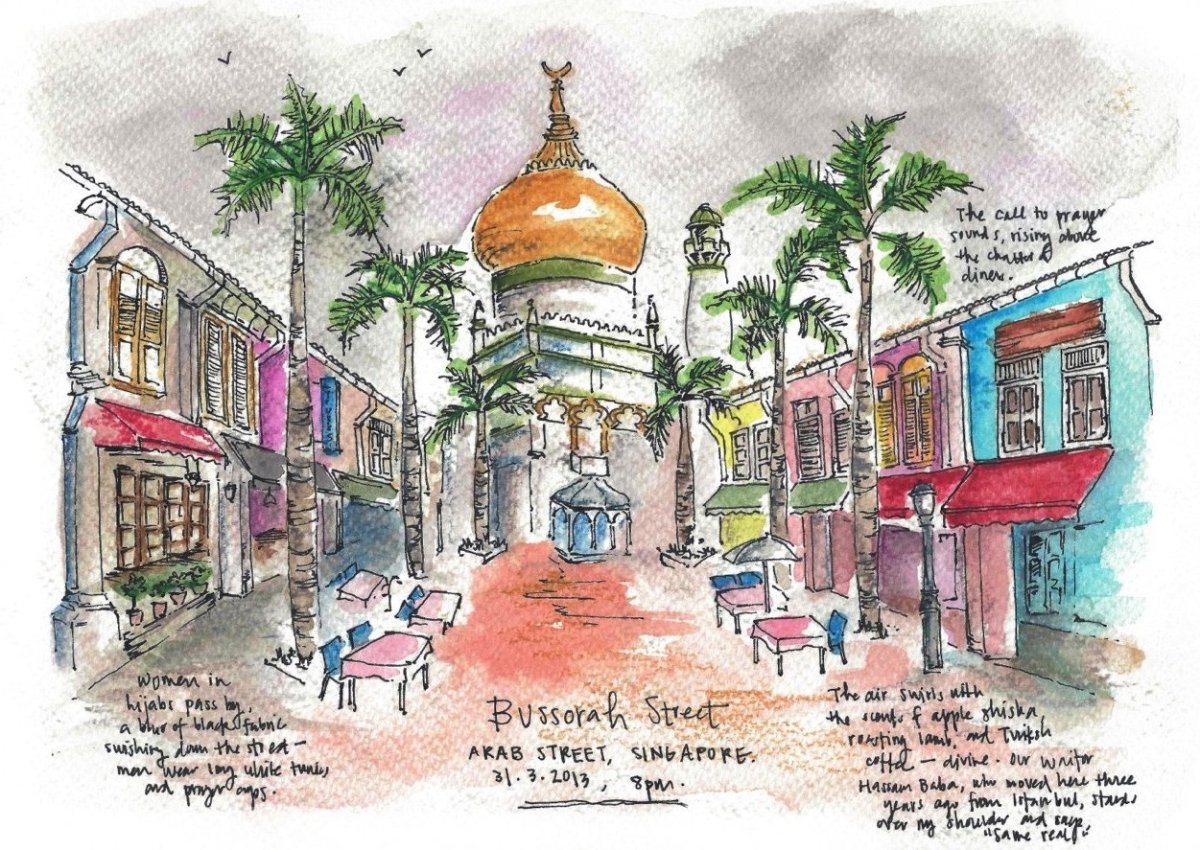
Alastair: I was very pleased on your website to see you reference Edward Wilson from Scott’s expedition. In my opinion it is the photography, the art and the literature that came out of that expedition that gave it the legacy it has today.
Candace: Absolutely.
Alastair: When you first started sketching on your travels, you said you hadn’t had an art lesson for a decade. But were you good at drawing before?
Candace: I guess I was. My dad was an artist so I guess I had that foundation in place. But then I really didn’t do anything with it for so many years.
Alastair: The reason I asked if you were good is because to me it looks like you were always talented but I also feel that someone who wasn’t could get to be nearly as good as you if they just put in the time.
Candace: Absolutely. I think I had a basic understanding of things, of composition and of drawing, but there’s been so many things to learn as well, especially in my use of colour and shadows and light. I think for anyone there’s a huge amount of room to learn and grow.
Alastair: I think whatever adventure people choose to go on, I think they should always aim to go deeper in some ways than merely doing the journey or the expedition.
Candace: I love that.

Alastair: I spoke to Rolf Potts a while ago. He talks about the need to be creative on trips and I think it would be a brilliant thing for more people to sketch their journeys even if they’re rubbish.
Candace: It’s not about being good at art. It’s not about having a pretty picture when you’re finished. It’s all about the creative process and what that does to me when I’mm travelling. It makes my trips so much richer now because I feel like I’mm observing and in a way I’mm contributing. I’mm not just taking pictures – taking, taking, taking. I’mm starting to give things back, especially when local people see me sketching on location. They love to come up and see I’mm taking the time to understand their home town and I think that draws them to connect with me a little bit more because of that.
Alastair: Yeah, definitely. One of things that really stands out to me about your using art to get deeper on your travels was what you describe as slowing yourself down and helping you be present.
Candace: The stillness can be unsettling at first though because when we’re travelling we’re so used to, go, go, go. You want to see as much as you can and so the idea of sitting in the same place for two hours is hard. People want to see everything. I have a good friend and artist named Chandler O’Leary and she said something that I repeat all the time. When she sketches while travelling, she sees less but remembers more. For me, that’s been the huge lesson and the reason I keep sketching. It really helps you have that presence that we all want when we’re travelling.
Alastair: I think that’s exactly what’s drawn me to doing slow journeys. The slower you go, the less you see but you see it better for sure.
Candace: Yeah. I mean you see it so clearly and forever. The times that I have spent walking cross-country, I can strongly remember so many moments from those trips.
Alastair: The other reason I think that doing art on a trip is brilliant, is meeting people and opening doors. You are instantly interesting and innocent.
Candace: That’s beautiful.
Alastair: Thanks! I made it up myself. Do you find people respond to you differently when you are sketching?
Candace: Oh my gosh, I can’t even compare it at all. Even two nights ago, I was sitting by the Ancient Agora in Athens with my sketchbook. A woman came up and said, “Oh, I’mm an artist.” So we started to chat and then an older man walked up and said, “I’mm a painter as well.” They started chatting very excitedly in Greek. I had no idea what was going on. And then the man picked up my sketchbook, flipped it open to a new page, and started drawing my portrait. I just thought none of this would have happened if I hadn’t taken the time to get my sketchbook out. Every time one of those encounters happens, I’mm like, “God, I love my sketchbook.” It’s amazing that it’s this little key that just continues to open doors for me.
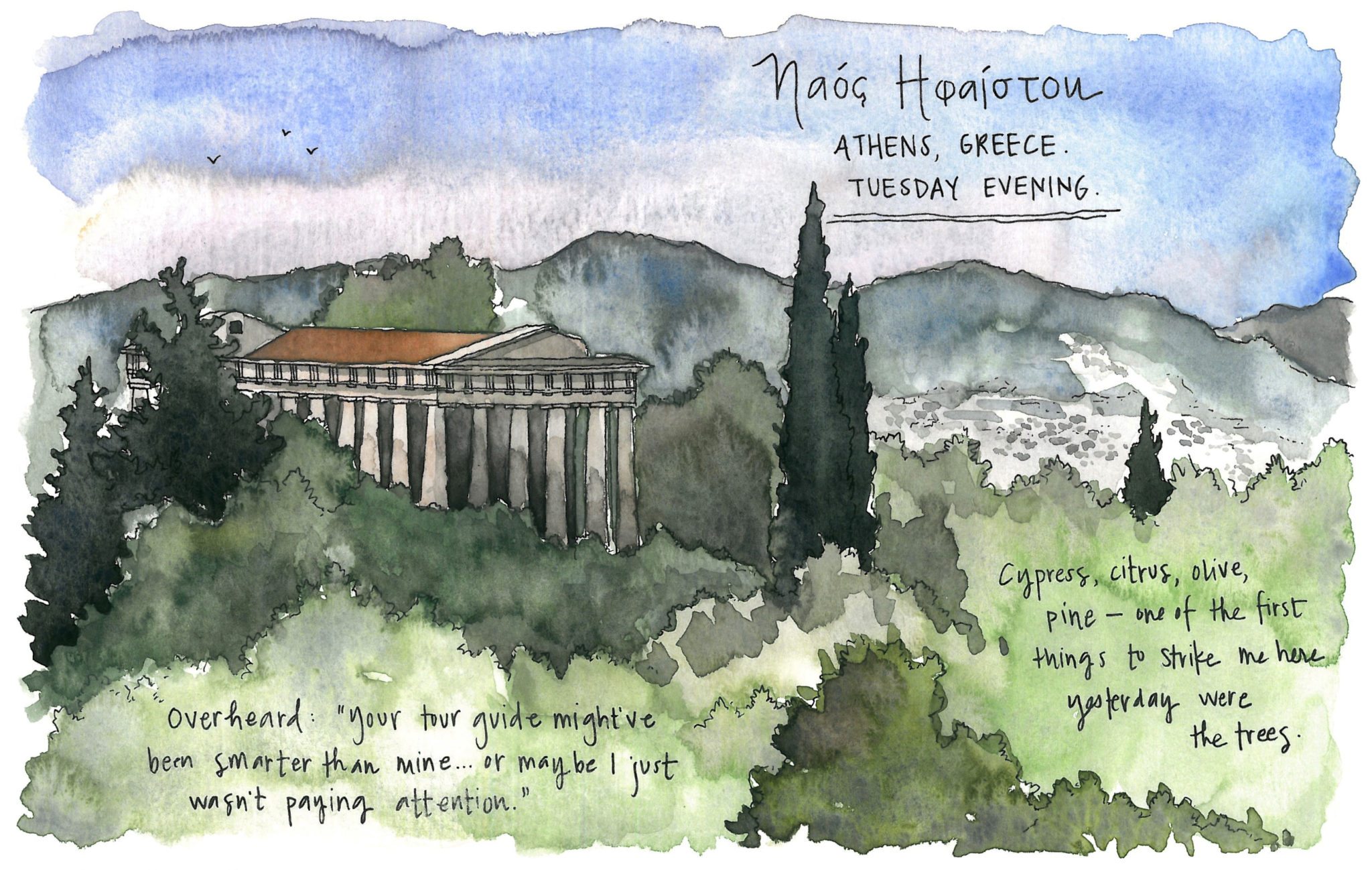
Alastair: I do quite a few overseas talks now and so you stay in some posh hotel somewhere in the world and it’s interesting to see how people treat me and I don’t always like it and it’s quite boring. So I walk out of the hotel and just walk around until I get lost and go eat in some little backstreet café. It’s amazing how people perceive you very differently in the space of 20 minutes.
Candace: Absolutely. I think of it as these little signals that you’re sending to that place. So when you take the time to go out of your way and find its little sidewalk restaurants I feel like you just sent a signal to the people around you that hey, this person wants to connect with us. I think people are more likely to approach you then.
Alastair: Absolutely. From your paintings, my favourite stuff that you do are the little details of working life. There’s one you did recently about the coffee sellers in Colombia and you’ve done a really nice little painting. I like your little annotations of what each little tool does. I think you should definitely do more of those.
Candace: Thank you. I don’t know why I’mm so drawn to just learning about the ordinary rhythms of a place. But for me, those are always the most meaningful connections, the most meaningful experiences when I learn. We’re all ordinary people and they’re ordinary people and you can have these very normal but then extraordinary connections.

Alastair: How do you pay to travel around the world living this wonderful life? Are you a millionaire?
Candace: Don’t I wish! I am far from a millionaire. I think people would be shocked if they knew how much money I don’t make. I support myself through freelance writing – writing for websites and for a few in-flight magazines – and I also sell custom artwork through Etsy. I do personal commissions for people – a few a month – and then also in this past year I’mve gotten into more illustration work. I illustrated a couple of projects for BBC Travel and Yahoo Travel, and in December I’mm going to Thailand to do a mural in Google Asia’s new office in Bangkok. It’s a portfolio of different things but thankfully it all comes together and sustains me.
Alastair: Do you have a home or are you location independent?
Candace: I am location independent. That’s a phrase I never knew growing up.
Alastair: It is the key to being able to live cheap, isn’t it?
Candace: It is. There’s a lot that I don’t have to worry about.
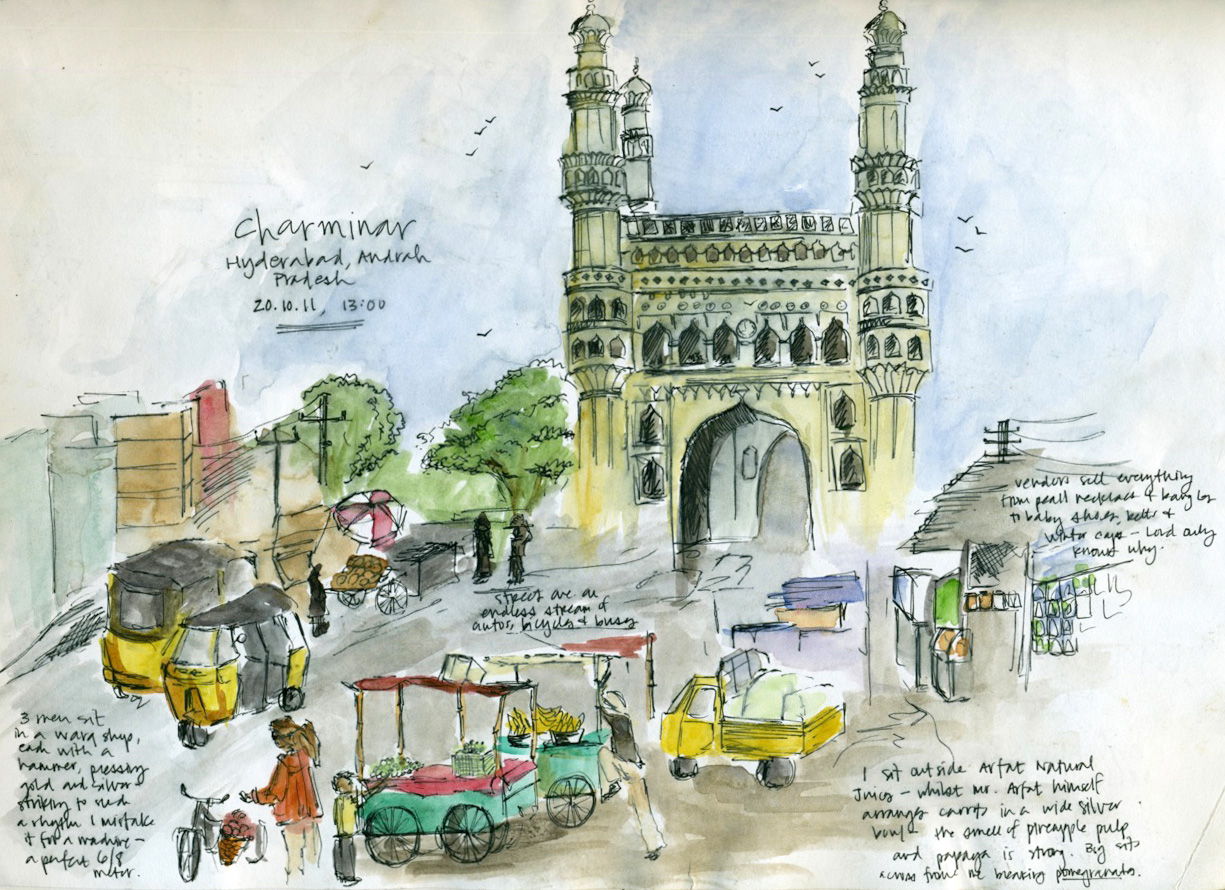
Alastair: You’ve got these cool things going on. I’mm sure there are quite a few people who look at that and are massively jealous. But what’s the journey from just travelling around and sketching for the fun of it? How do you actually start to make a living out of your travels? This is something people are often interested in.
Candace: It really just took saying to the world that I’mm an artist, I’mm an illustrator, and people gradually began to approach me with projects.
Alastair: I think it’s really important to make a declaration of what you are, saying ‘œI want to do this.’ But also to actually be it and start to produce content. Produce good content which hopefully at some point someone might pay you for. No one is going to hire you to be an illustrator unless you’ve illustrated lots of stuff that they can see regardless of whether you got paid for it.
Candace: Exactly. Just create your portfolio, even with personal projects.
Alastair: My final question is if I gave you £1000 for an adventure, what would you do?
Candace: This year I spent three months living in a yurt on a little island in Canada and basically fell in love with yurts. So I would use the money on a flight to Ulan Bator and then hopefully the rest of it would get me out into the steppes to meet families and spend six months or a year with them, getting to know their lifestyle and their rhythms.
Alastair: Thank you.
My new book, Grand Adventures, is out now.
It’s designed to help you dream big, plan quick, then go explore.
The book contains interviews and expertise from around 100 adventurers, plus masses of great photos to get you excited.I would be extremely grateful if you bought a copy here today!
I would also be really thankful if you could share this link on social media with all your friends – http://goo.gl/rIyPHA. It honestly would help me far more than you realise.
Thank you so much!
Grand Adventures from Alastair Humphreys on Vimeo.

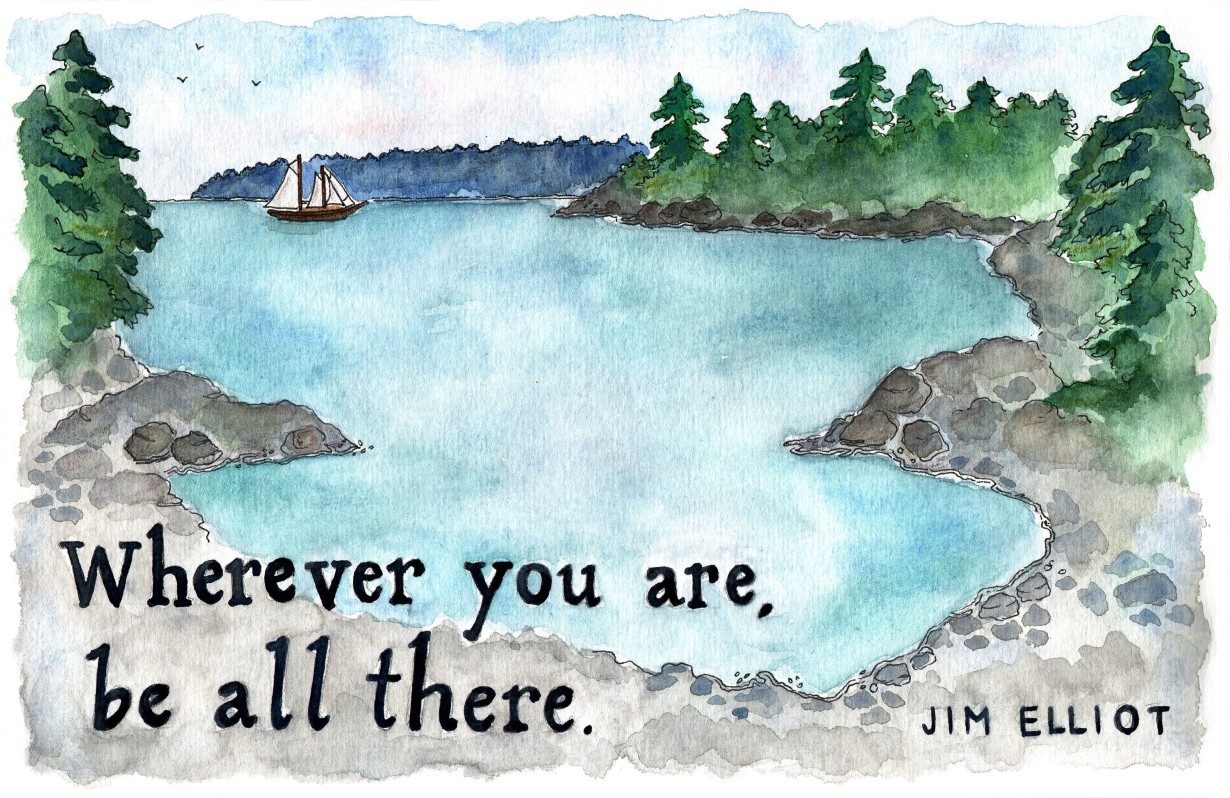
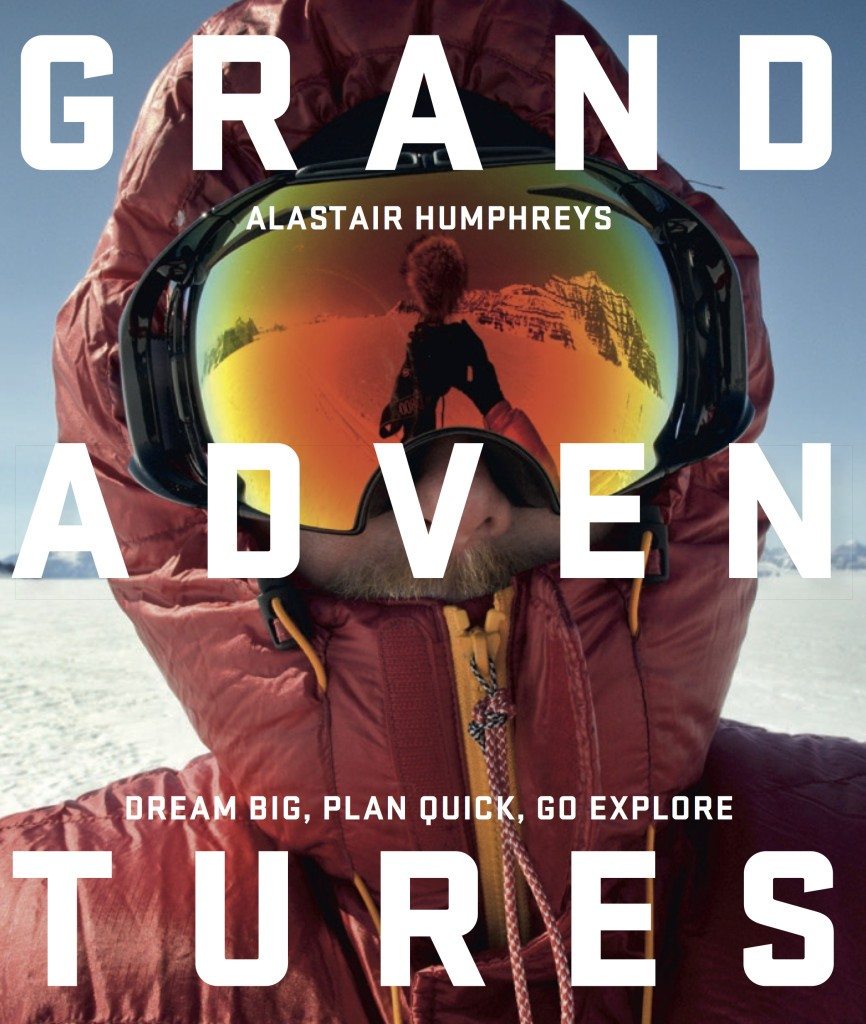



I have to say, this is a lovely chat and Candace is such an inspiration to get my sad sketchbook out more often. Sketches and photographs I *have* taken do elicit the yummiest twinges of nostalgia. But at the same time I try to stay forward-looking for the sake of openness to the new. I too travel all around alone and can really appreciate Candace and Alastair’s sentiments. It’s a good life out there!
Thanks so much, Caroline, and I’m glad to hear the interview resonated with you! I hope you’ll have a chance to get your sketchbook out soon 🙂
I have a question for either of you, or for future interviews, how long does this process take you of going from making no money to making enough to pay for travel and life. Did you do it in a year or two or more like five? Also, is it gradual improvement, or do you go say 1-2 years feeling like you’re going completely nowhere and then reach a critical mass and it takes off more suddenly.
I’d say it took me 5 years to feel that I was at a point of being sustainable. The progress is definitely exponential too.
I love these questions, Jamie, and I’d have to say that in my experience, it’s been a very gradual process – especially because I never planned on art being a part of my vocation. It’s taken time to grow that part of what I do and create connections in the field.
I’ve been supporting myself as a freelancer for just under three years, and only now feel like I’m beginning to earn a truly sustainable income. I definitely echo Alastair in thinking that five years sounds like a good trajectory.
Another thing relating to hitting a critical mass is something I heard Lonely Planet founder Tony Wheeler say this summer. When asked when his tipping point was, he said that there was none – that it had been a series of tipping point – which made a lot of sense to me.
Best of luck, and thanks for reading!